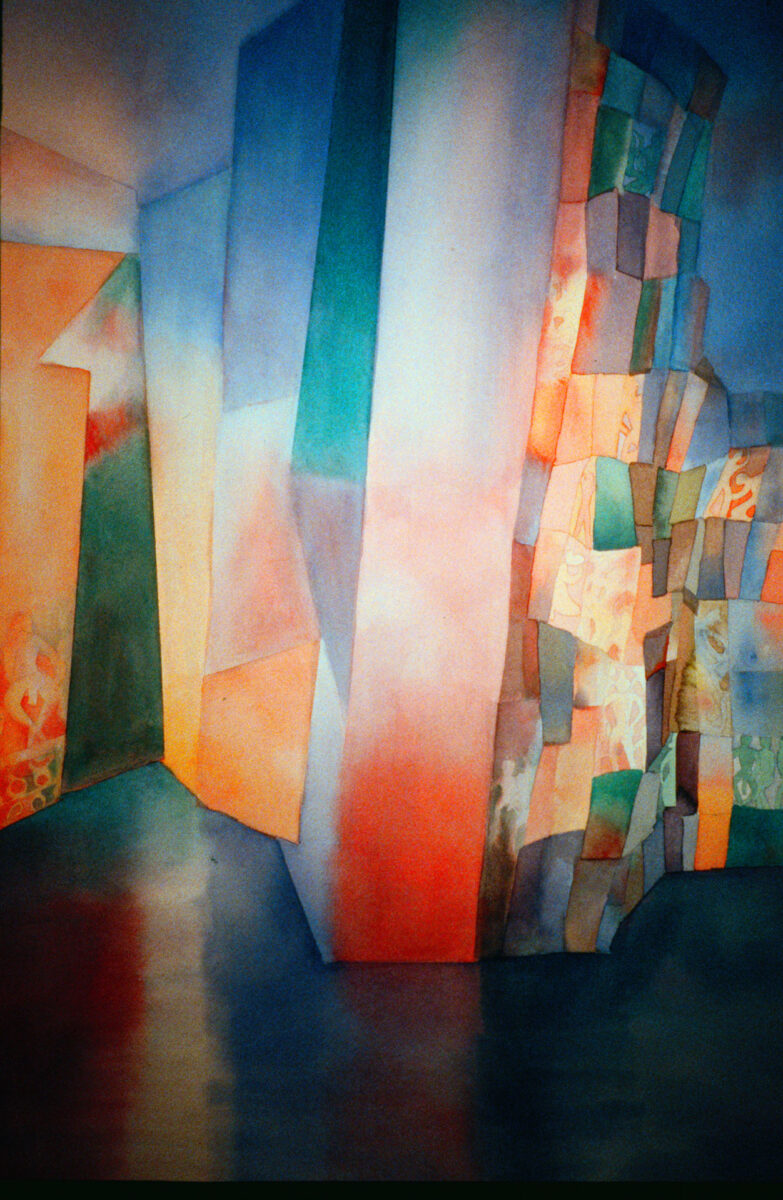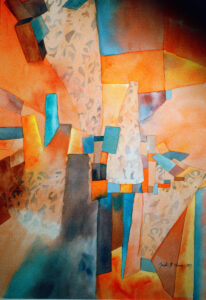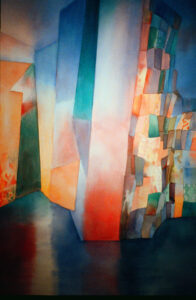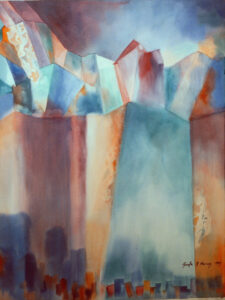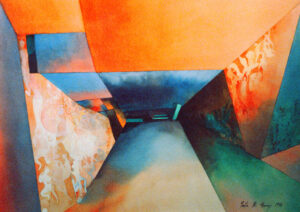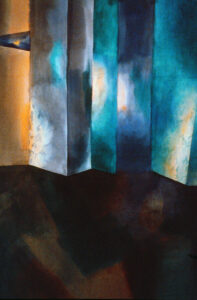A subconscious affinity to walls had surfaced before this series was conceptualized in my mind. I had been looking at walls as linkages rather than as barriers. While personal ties to the solemnity and silence of the Vietnam Wall in Washington, D.C., can be considered a springboard, factors such as sounds of life and jubilance of music are also interwoven in the Blue Walls’ construction. Creating the wall involved not only resolution of problems related to weight, mass, color, lightness and darkness, but also those related to organization of personal thoughts.
The Blue Wall has connections with my being born soon after the Partition of India and Pakistan in 1947. The Partition involved the division of the former Indian sub-continent into India and Pakistan. Two countries were made out of one over the conflict between the Hindus and the Muslims. During that time the Hindus fled to the newly divided India and the Muslims fled in the opposite direction. My parents were among the exodus of Hindus from Pakistan. I was born after they migrated from the sub-continent and lived as refugees in the now divided India. Thus a metaphoric wall was erected in my mind as a child while growing up in an environment where memories of the Partition were evoked by the adults frequently. This series also has affinity to the other wars that I experienced: The Chinese invasion of India, the Vietnam war when I came to the US, and later the Gulf war.
The Blue Wall pays homage to all who died during the various wars. It honors the spirit of those who seek peace and healing in the world as opposed to conflict and division. As I immersed myself in the creation of the walls, they became a depository of personal thoughts, conflicts and resolution.
The first of The Blue Wall series, The Orange Wall was conceptualized after a trip to Washington, D.C. in the early 1990’s. Standing before Maya Lin’s Vietnam Veterans’ Memorial wall and experiencing its quiet grandeur, dignity and translucency I came back from Washington, D.C. moved. As I contemplated about my experience I would see before my eyes, blocks of reflective surfaces with images from my past and present life. These images gradually became an imaginary wall. The Orange Wall was born. The Orange Wall gradually turned into a Blue Wall. The Washington experience fermented in my mind for several months.
Along with my personal experience before the Vietnam Wall, music was an important factor in its construction. The angularity and cubism of orchestras and choruses that I loved juxtaposed against its softer tones and led to the gradual structuring of the Blue Wall. Buried in this wall were the highs and lows of life. Reflected in the Blue Wall 1 and in all the walls that follow were figurative forms and the sounds and silences of those living and gone.
An upright three dimensional wall, Blue wall 2 not only explores color, value and the transparency of watercolor but also the building of a solid wall structure with its painterly washes. The subtle pink and blue washes speak of marriage, fertility, childbirth, the future and of dreams. In an abstract manner The Blue walls were becoming a means of chronicling the saga of my life.
The soft watercolors, while building the composition gradually dissolved into a powerful watery whiteness. The structural relationships within the Blue Walls were not just about mass, volume and value but also had a cohesiveness through the emotion and experience that went into building them.
Recalling the Himalaya Mountains Blue Wall 3 focuses on the natural barrier of mountains as a wall that has been breached numerous times as swarms of refugees have poured in and out through them.
Blue Wall 4 has connections between drawings made in 1993 and kinesthetic experiences of 30 to 35 years before that. The past experience I refer to is that of climbing a slope of a mountain as a child in the back of the house our family had rented for the summer in Dalhousie, India. Dalhousie is a hill station in the Himalayas and we were vacationing there. Blue Wall 4 combines past kinetic and emotional experiences to those of the present time – Himalayan Mountains to the Partition and to the Vietnam Wall – a stretch of time, imagination and experience.
Blue Wall 5 is a three dimensional inlet into a cave like wall structure. Leading the eye towards the back of the cave, the wall evokes the exodus of war refugees into territories unknown.
The solemn Blue Wall 6 stands impenetrable on a dark, dense, floor. It speaks of impotency of the mind, the soul and the body. A space that once had linkages to areas on both sides of it is now divided. Instead of being a linkage the wall is more of a barrier.

